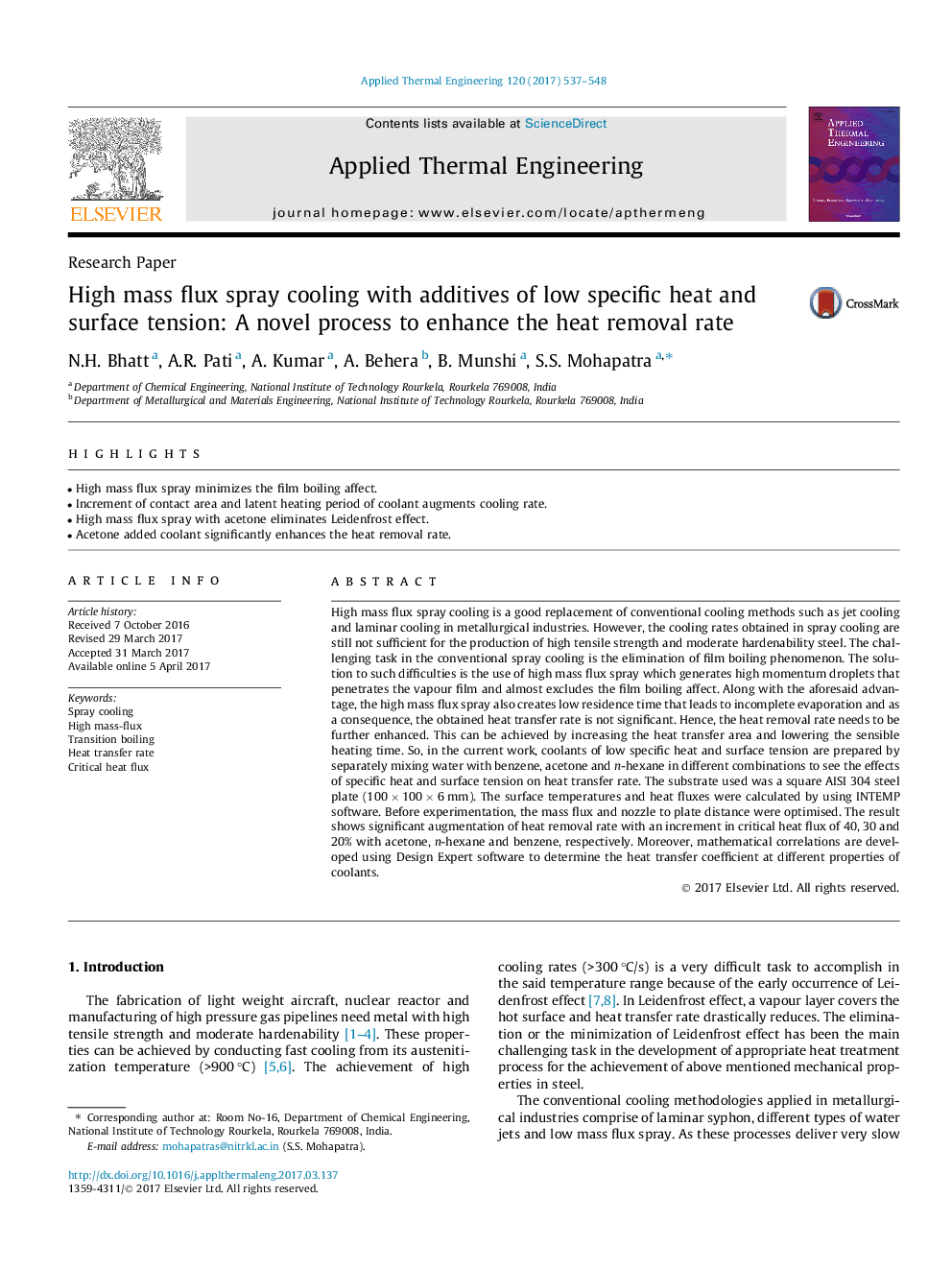| Article ID | Journal | Published Year | Pages | File Type |
|---|---|---|---|---|
| 4991031 | Applied Thermal Engineering | 2017 | 12 Pages |
Abstract
High mass flux spray cooling is a good replacement of conventional cooling methods such as jet cooling and laminar cooling in metallurgical industries. However, the cooling rates obtained in spray cooling are still not sufficient for the production of high tensile strength and moderate hardenability steel. The challenging task in the conventional spray cooling is the elimination of film boiling phenomenon. The solution to such difficulties is the use of high mass flux spray which generates high momentum droplets that penetrates the vapour film and almost excludes the film boiling affect. Along with the aforesaid advantage, the high mass flux spray also creates low residence time that leads to incomplete evaporation and as a consequence, the obtained heat transfer rate is not significant. Hence, the heat removal rate needs to be further enhanced. This can be achieved by increasing the heat transfer area and lowering the sensible heating time. So, in the current work, coolants of low specific heat and surface tension are prepared by separately mixing water with benzene, acetone and n-hexane in different combinations to see the effects of specific heat and surface tension on heat transfer rate. The substrate used was a square AISI 304 steel plate (100Â ÃÂ 100Â ÃÂ 6Â mm). The surface temperatures and heat fluxes were calculated by using INTEMP software. Before experimentation, the mass flux and nozzle to plate distance were optimised. The result shows significant augmentation of heat removal rate with an increment in critical heat flux of 40, 30 and 20% with acetone, n-hexane and benzene, respectively. Moreover, mathematical correlations are developed using Design Expert software to determine the heat transfer coefficient at different properties of coolants.
Related Topics
Physical Sciences and Engineering
Chemical Engineering
Fluid Flow and Transfer Processes
Authors
N.H. Bhatt, A.R. Pati, A. Kumar, A. Behera, B. Munshi, S.S. Mohapatra,
